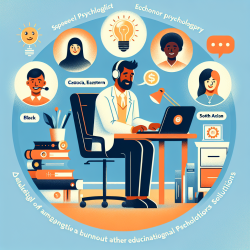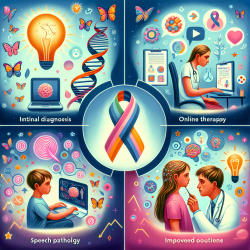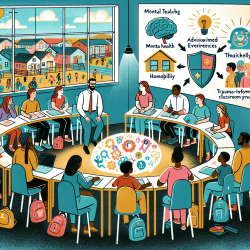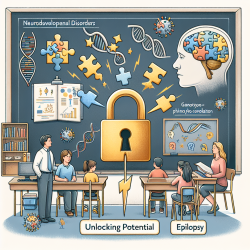In the ever-evolving field of speech and language pathology, professionals continually seek ways to enhance their therapy skills and improve outcomes for individuals with severe communication disorders. A significant resource in this quest is the research article "Augmentative and Alternative Communication Management of Severe Communication Disorders in Children and Adults." This paper offers a comprehensive overview of strategies and interventions that can profoundly impact therapy practices.
Augmentative and Alternative Communication (AAC) plays a pivotal role in assisting those with severe communication challenges. AAC encompasses a range of tools and strategies, from high-tech devices to simple picture boards, tailored to meet the unique needs of each individual. By integrating the findings and methodologies presented in the research, practitioners can elevate their therapy sessions, ensuring that interventions are more personalized, effective, and engaging.
One key takeaway from the research is the importance of customizing AAC tools to fit the cognitive and physical abilities of the user. Therapists are encouraged to involve clients and their families in the selection process, ensuring that the chosen method aligns with the user's preferences, lifestyle, and communication goals. This collaborative approach not only enhances the user's comfort with the AAC system but also promotes greater independence and confidence in their communication abilities.
The article also emphasizes the need for ongoing assessment and adaptation of AAC strategies. As individuals grow and their needs change, their AAC solutions must evolve accordingly. Practitioners can implement a dynamic, responsive approach to AAC management by staying informed about the latest technologies and methodologies. This involves not only adjusting the tools and strategies used but also continuously educating themselves, their clients, and their families about new developments in the field.
Another critical aspect highlighted in the research is the role of AAC in facilitating social interaction and integration. AAC users often face barriers to social participation, which can lead to isolation and reduced quality of life. By implementing the strategies outlined in the paper, therapists can help clients develop the skills necessary for successful social engagement, ranging from initiating conversations to understanding social cues.
Furthermore, the research advocates for a multidisciplinary approach to AAC management. Collaboration among speech-language pathologists, occupational therapists, educators, and other professionals ensures that AAC interventions are comprehensive and address all aspects of the individual's life. This team-based approach facilitates a more holistic understanding of the client's needs, leading to more effective and meaningful communication outcomes.
In conclusion, the research article "Augmentative and Alternative Communication Management of Severe Communication Disorders in Children and Adults" serves as an invaluable resource for practitioners looking to enhance their therapy skills. By applying the insights and strategies presented, therapists can make significant strides in improving the lives of individuals with communication challenges. For those interested in delving deeper into this topic, I highly recommend reading the original research paper.
To read the original research paper, please follow this link: Augmentative and Alternative Communication Management of Severe Communication Disorders in Children and Adults.










